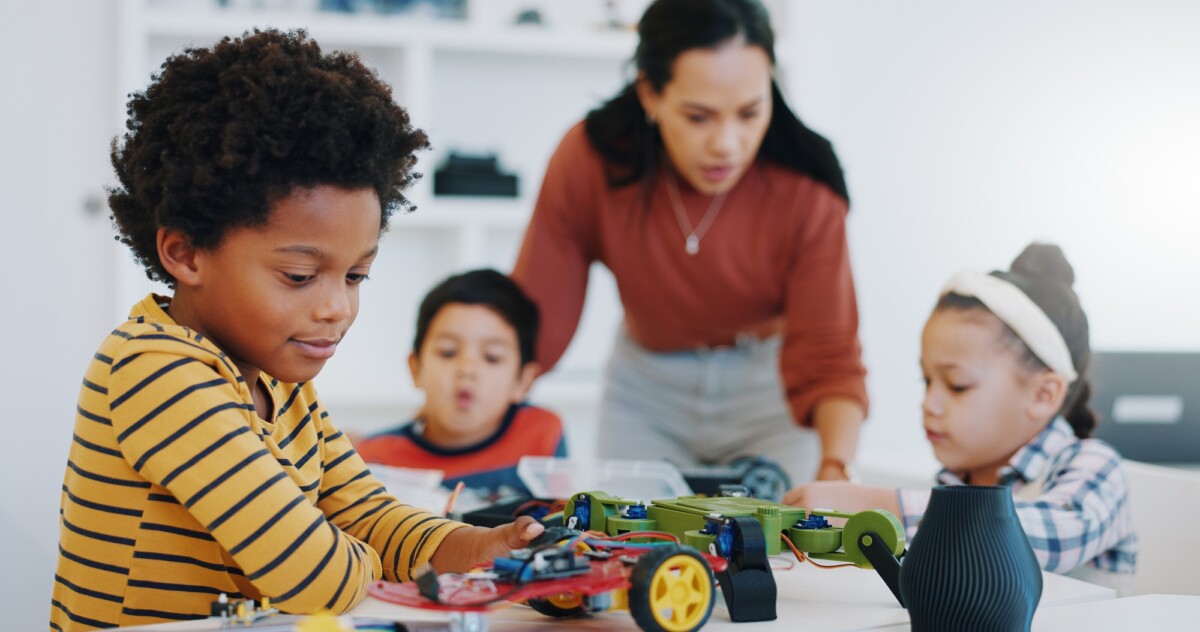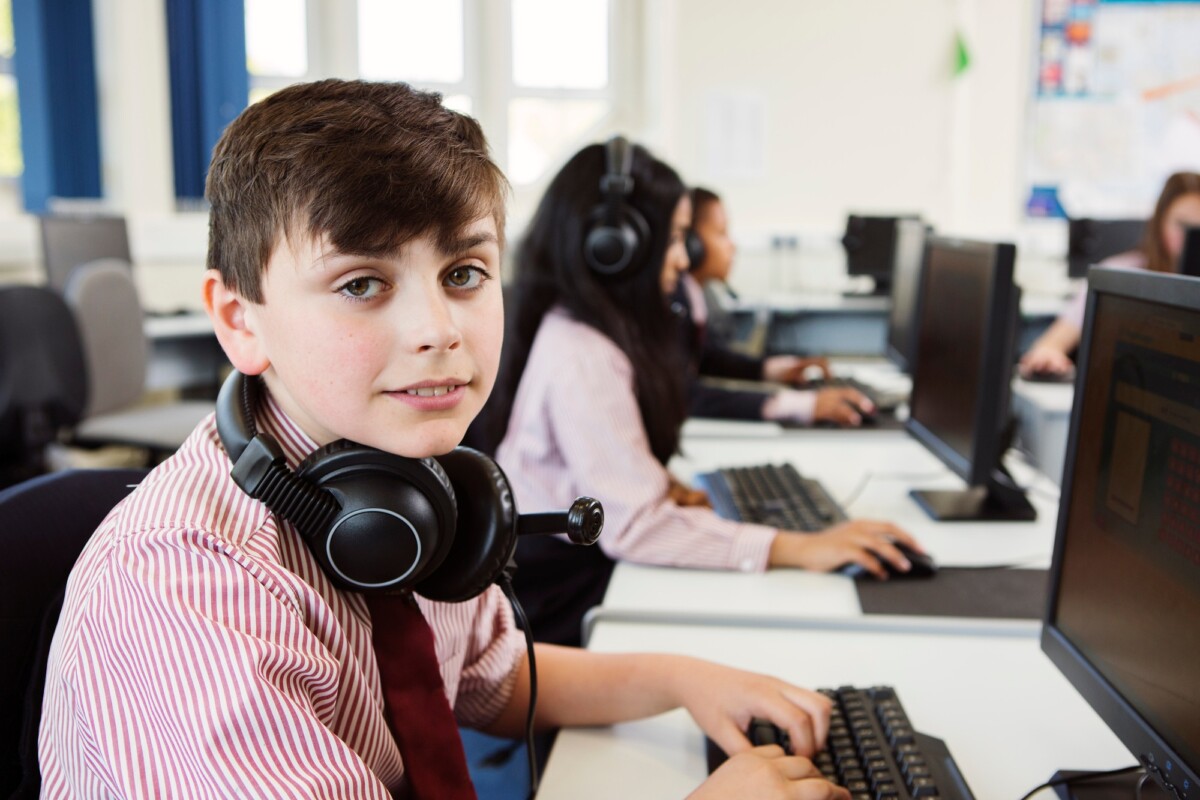
As we enter 2024, the integration of Top Educational VR Product is transforming classrooms. The top educational VR products enhance learning experiences and engage students in ways traditional methods cannot. By immersing themselves in virtual environments, students can explore complex concepts and historical events, making learning enjoyable and impactful.
Key Features of Top Educational VR Products
- Immersive Learning Experiences: Students can enter virtual worlds, deepening their understanding of subjects like science and history.
- Interactive Simulations: VR tools provide safe environments for students to practice skills, such as conducting virtual chemistry experiments.
- Accessibility: Advancements in technology are making VR more accessible, enabling schools to easily integrate these tools into their curricula.
How Can Students Use AI in School?
- Personalized Learning: AI tailors educational content to individual student needs, enhancing VR experiences.
- Enhanced Engagement: The combination of AI and VR creates dynamic learning environments that adapt to student interactions, fostering deeper engagement.
- Data-Driven Insights: AI analyzes student performance in VR, offering educators valuable insights to refine teaching strategies.
Unlock your potential with online degrees—Learn more!
How VR Technology is Transforming Classroom Learning

As we approach 2024, the role of Virtual Reality (VR) in education is becoming increasingly important. VR allows students to explore complex subjects through immersive experiences that traditional methods can’t provide. This leads us to consider: What are the best VR products for education this year?
Engaging Learning Experiences
VR technology enables students to engage with their curriculum in unprecedented ways. They can dive into the ocean’s depths or traverse ancient civilizations—all from their classroom, significantly enhancing retention and understanding.
Top Educational VR Products
- Oculus Quest 2: A versatile headset supporting various educational apps.
- Google Expeditions: Ideal for virtual field trips, letting students explore globally.
- ClassVR: Designed for classroom use, offering a wide range of educational content.
These tools showcase how virtual reality in education fosters dynamic learning environments that capture students’ imaginations. Additionally, integrating AI with VR can personalize learning experiences, ensuring tailored content for each student, thus creating a more interactive and effective educational landscape.
The Benefits of Using VR in Education: A Comprehensive Overview
As we delve into the best VR products for education in 2024, it’s crucial to recognize their potential to revolutionize learning. Virtual reality in education creates immersive environments that captivate students, making complex topics more engaging and easier to grasp. This innovative method not only boosts understanding but also encourages creativity and collaboration among learners.
Key Benefits of VR in Education
- Enhanced Engagement: Immersive experiences lead to increased student participation.
- Real-World Applications: VR enables exploration of scenarios like virtual field trips, which traditional classrooms cannot offer.
- Personalized Learning: Educators can customize VR experiences to cater to individual student needs, improving learning outcomes.
How Can Students Use AI in School?
Combining AI with VR enhances educational experiences. AI can assess student interactions in VR, offering insights into their learning styles and progress. This information allows educators to tailor lessons, ensuring that all students benefit from the top educational VR products available today.
What to Look for in the Best Educational VR Products
As we enter 2024, virtual reality (VR) is revolutionizing education by enhancing learning experiences and engaging students in unique ways. For educators and institutions looking to integrate VR effectively, understanding key features is essential.
Immersive Content
Focus on immersive content that aligns with curriculum goals, such as interactive simulations and historical recreations, to make learning enjoyable and impactful.
User-Friendly Interface
A user-friendly interface is crucial, enabling students to navigate VR environments easily and concentrate on learning rather than technology challenges, particularly for younger users.
Integration with AI
Explore how students can use AI in conjunction with VR. Products that integrate AI can personalize learning experiences, adapting to individual student needs and enhancing outcomes.
Compatibility and Accessibility
Finally, ensure VR products are compatible with existing school technology and accessible to all students, considering hardware requirements and resources for diverse learning needs.
Top Educational VR Product Reviews: Our 2024 Picks
As we enter 2024, the role of Virtual Reality in education is increasingly vital. Immersive experiences allow students to delve into complex concepts and environments like never before. Here’s our curated list of the top educational VR products that are revolutionizing classrooms and improving learning outcomes.
1. Oculus Quest 2
The Oculus Quest 2 stands out as a leading educational VR product, thanks to its affordability and vast library of educational apps. It enables students to participate in interactive lessons, from historical reenactments to scientific explorations, making learning enjoyable and effective.
2. Engage VR
Engage VR is a flexible platform that empowers educators to design custom virtual environments. Ideal for collaborative projects, it fosters teamwork and creativity among students in a virtual setting.
3. ClassVR
ClassVR provides a complete solution for schools with headsets and a curated content library. Its user-friendly interface allows teachers to seamlessly integrate VR into their lessons, making it a great option for newcomers to virtual reality in education.
How VR Enhances STEM Learning Experiences
In 2024, Virtual Reality (VR) is revolutionizing education, particularly in STEM subjects. As educators adopt innovative tools, identifying the best educational VR products is essential. These technologies not only enhance learning but also equip students for a tech-driven future.
Immersive Learning Environments
VR immerses students in environments where they can explore complex STEM concepts. For example, they can conduct virtual chemistry experiments or journey through the solar system, making abstract ideas more tangible and engaging.
Collaboration and Interaction
VR facilitates seamless collaboration, allowing students to work together in virtual labs, share insights, and develop critical thinking skills. Additionally, educators can utilize AI to personalize learning experiences, addressing the question: How can students use AI in school?
Top Educational VR Products
Notable educational VR products for 2024 include:
- Google Expeditions: Virtual field trips for geography and history.
- Labster: Virtual labs for accessible science experiments.
- Engage: A platform for interactive lessons that enhance student engagement.
Are VR Simulations Effective for Skill Development?
In 2024, the best VR products for education are revolutionizing traditional teaching methods, allowing students to engage with content in unprecedented ways. This transformation not only captivates learners but also enhances their understanding and retention of knowledge.
Engaging Learning Experiences
VR simulations offer hands-on experiences vital for skill development. By immersing in realistic scenarios, students can practice and refine their skills safely, especially in fields like medicine, engineering, and the arts where practical experience is crucial.
Benefits of VR in Education
- Enhanced Engagement: VR encourages active participation among students.
- Real-World Applications: It enables learners to apply theoretical knowledge practically.
- Collaboration Opportunities: Virtual environments facilitate teamwork, regardless of location.
Utilizing top educational VR products can significantly enhance student learning and interaction with complex subjects. Furthermore, integrating AI with VR can personalize and enrich the educational experience even more.
Unlock your potential with online degrees—Learn more!
Integrating VR into Existing Curricula: Challenges and Solutions
Exploring the best VR products for education in 2024 highlights the potential of integrating virtual reality into existing curricula to enhance learning. VR creates immersive environments that make lessons more engaging and interactive. However, educators encounter several challenges when implementing these technologies in classrooms.
Identifying Key Challenges
- Cost and Accessibility: Financial constraints often hinder schools from acquiring top educational VR products.
- Training Educators: Teachers require adequate training to utilize VR tools effectively.
- Curriculum Alignment: Aligning VR content with educational standards can be complicated.
Solutions to Overcome Barriers
- Pilot Programs: Initiating small pilot programs allows schools to test VR tools before broader implementation.
- Collaborative Learning: Promoting teamwork through VR encourages students to collaborate and communicate.
- Utilizing AI: Integrating AI tools alongside VR can personalize learning, helping students understand complex concepts through interactive simulations, thereby enhancing the effectiveness of virtual reality in education.
How ‘CollegeAndTuition.com’ Can Help You Choose the Right VR Tools
As we enter 2024, Virtual Reality (VR) is revolutionizing education, offering immersive experiences that traditional methods can’t match. Understanding the best VR products for education is essential for educators and institutions looking to enhance learning outcomes.
‘CollegeAndTuition.com’ provides invaluable resources for selecting top educational VR products. Our expert reviews and comparisons guide you through the myriad of options available, whether you seek tools for STEM learning or immersive historical experiences.
Key Features to Consider
- User-Friendly Interface: Ensure the VR product is accessible for both teachers and students.
- Content Variety: Choose platforms that cover a wide range of subjects.
- Integration with AI: Discover how students can use AI in school alongside VR to tailor their learning experiences. Focusing on these features will empower you to make informed decisions that enhance your educational environment.
Future Trends in Educational VR: What to Expect Beyond 2024
As we look towards 2024, the landscape of educational technology is evolving rapidly, particularly with the integration of virtual reality (VR). Understanding the best VR products for education is crucial for educators and institutions aiming to enhance learning experiences. These tools not only engage students but also provide immersive environments that facilitate deeper understanding of complex subjects.
Enhanced Interactivity
The top educational VR products are expected to feature even more interactive elements. Students will be able to manipulate 3D models, conduct virtual experiments, and collaborate in real-time, making learning more engaging and effective.
AI Integration in VR
How can students use AI in school? The integration of AI with VR will personalize learning experiences. Adaptive learning platforms will analyze student performance and adjust VR scenarios accordingly, ensuring that each learner receives tailored support and challenges.
Unlock your potential with online degrees—Learn more!
FAQs
-
What is an educational VR product?
An educational VR product is a virtual reality tool designed to enhance learning by immersing students in interactive, 3D environments. -
How does VR help in education?
VR provides immersive learning experiences that make abstract concepts tangible, increase engagement, and improve retention. -
At what age can children start using educational VR?
Most VR products are recommended for children aged 8 and above, but some apps offer experiences for younger learners. -
What subjects can be taught using VR?
VR is used for subjects like science, history, math, geography, language learning, and even career training.





